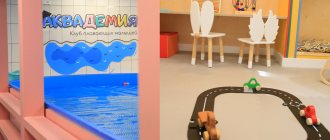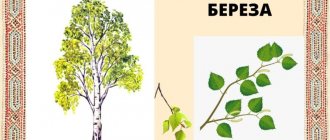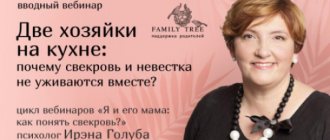Founding of the capital
Moscow is a huge, beautiful city with a special atmosphere, a unique past and centuries-old traditions. Every day a large number of people from different cities and countries come to it to study and work, as well as to see the sights.
Today Moscow is the capital of Russia. It was first mentioned in 1147 as the village of Moscow. According to ancient chronicles, Grand Duke Yuri Dolgoruky ordered the small settlement, which was located on a hill where two rivers - the Moscow River and Neglinka - merged, to be surrounded by a high wooden wall (city). He surrounded the wall with a deep ditch and nicknamed this place Moscow City.
The founding of the city had a positive effect on the inhabitants. It was very conveniently located, since major trade routes passed through it. This contributed to the further growth and development of Moscow.
By decision of Prince Ivan Kalita, Moscow became the capital of Rus' in 1328. By this time, the city's territory had become larger and the population had increased significantly.
Prince Dmitry Donskoy ordered the demolition of the old wooden walls and erected new ones made of white stone instead. From that moment on, Moscow began to be called White Stone.
Short and beautiful poems about Moscow
Adelina Adalis
The streets of Moscow are proud, But sometimes in the evenings they are deserted: In them you can see the Pamir ridges and the Tien Shan mountain gorges. Gloomy strongholds; along the roads Terrible beauties without coquetry, Yellow light and dark breeze - India is a sudden neighbor.
≈≈≈≈≈≈≈≈≈≈≈≈≈≈≈≈≈≈≈
M. Lermontov - “Moscow, Moscow!.. I love you like a son” (Excerpt from the poem “Sashka”)
Moscow, Moscow!.. I love you like a son, Like a Russian - strongly, passionately and tenderly! I love the sacred shine of your gray hairs And this jagged, serene Kremlin. In vain did the alien ruler think with you, the hundred-year-old Russian giant, to measure his head and overthrow you by deception. The stranger struck you in vain: you shuddered - he fell! The universe fell silent... Majestic, You alone are alive, the heir of our glory.
≈≈≈≈≈≈≈≈≈≈≈≈≈≈≈≈≈≈≈
M. Tsvetaeva - Over the city rejected by Peter...
The thunder of bells rolled over the city rejected by Peter.
The rattling surf capsized over the woman you rejected.
Praise be to Tsar Peter and to you, O Tsar! But above you, kings: bells.
While they thunder from the blue - Moscow's primacy is undeniable.
- And as many as forty forty churches Laugh at the pride of kings!
≈≈≈≈≈≈≈≈≈≈≈≈≈≈≈≈≈≈≈
Ivan Bunin - In Moscow
Here, in the old alleys behind the Arbat, a very special city... Here it is March. And it’s cold and low on the mezzanine, There are a lot of rats, but at night it’s wonderful. During the day it’s mellow, dripping, the sun is warming, And at night it will freeze, it will become clear, Light - and so similar to Moscow, Ancient, distant. I’ll sit down, without lighting the fire, near the windows, bathed in moonlight, and look at the garden, at the rare stars... How tender the night sky is in spring! How calm the Moon is in spring! The crosses on the ancient church glow like candles. Through the branches in the deep sky, the heads of small domes shine tenderly, like golden forged helmets...
≈≈≈≈≈≈≈≈≈≈≈≈≈≈≈≈≈≈≈
I. Ehrenburg
There is a city with dusty outposts, With large golden domes, With wooden mansions, With artisans always drunk, And so much close and dear in the words: Arbat, Dorogomilovo...
≈≈≈≈≈≈≈≈≈≈≈≈≈≈≈≈≈≈≈
A. Udalova
I love you, beautiful Moscow; Your gardens and parks and forests. And the voices of cheerful children that have not stopped since early morning.
I love your tall houses and noisy roads and shops. I love your stories of place And your sunset, blushing like a raspberry bush.
I love walking along your streets, I love your theaters and museums. Every corner here seems like home to me. Moscow, I love you more every day!
≈≈≈≈≈≈≈≈≈≈≈≈≈≈≈≈≈≈≈
M. Matusovsky - Hometown
Here Pozharsky thundered, here Kutuzov commanded the battle. You, like an ancient fairy tale, are immortal, beautiful and old. Frozen packs of French retreated from you, Countless hordes of Tatars retreated from you. We will surround you with an armored formidable force And at any cost we will save you in a merciless battle, So that the approaches to the city become a grave for the German And the line near Moscow is his last frontier. You will not surrender to the fascists, the granite above the river and the cast iron bridge will remain forever and ever. This is more than a city - this is the capital of the new world, This is light, this is life, this is your heart and mine.
≈≈≈≈≈≈≈≈≈≈≈≈≈≈≈≈≈≈≈
A. Barto - The first fireworks in Moscow... Childhood Forever
When the thunderous salute rang out over the capital for the first time, frightened birds flew over the illuminated Moscow.
From all sides - From Tverskaya, from Neglinnaya, Over the squares, over the Arbat They rushed about in a long flock And rushed somewhere into the darkness.
They have long been accustomed to the harsh, darkened Moscow. And suddenly there were lights above Malaya Bronnaya, and lights above the boulevards.
For the first time, the sky flared up, the River shone with silver... Probably, it seemed to the birds: Spring in Moscow! Spring thunder!
≈≈≈≈≈≈≈≈≈≈≈≈≈≈≈≈≈≈≈
Yuri Levitansky - I love autumn Moscow...
I love autumn Moscow in its bright decoration, when in the morning they burn leaves that have fallen in the wind. A huge slow fire over the fallen garden looks like a pointed church with a charred facade. And the old maple has completely drooped, stands, sadly hunched over... It seems to me that they have their own pride, the leaves have their own. So what, so what if they are crushed and beaten! They contain a silent triumph of anticipation of victory. They will lie down in the black soil, fertilize it with themselves, but after many years and winters their descendants will approve of them, They will wipe away an unnecessary tear, and in the youthful trembling all the unjustifiability of losses will be justified... The goose wedge soars, soars, behind the clouds the geese groan. The autumn maple is burning, burning, the leaves will turn to ash. The winds will blow away the old garden, it will leave with summer... And new leaves will come, they will follow those.
≈≈≈≈≈≈≈≈≈≈≈≈≈≈≈≈≈≈≈
Nikolay Yazykov
AU! I'm here! – Long live Moscow! This is my dear heaven! Here our Mother Russia of the Seven Hundred Years is alive! Everything happened here: captivity, freedom, the Horde, and Poland, and Lithuania, the French, the laurel and the intoxication of the people, Everything, everything!.. Long live Moscow!
With what thoughts this hill of ancient walls and towers, loopholes, cathedrals and chambers is decorated! Here the story of our troubles and our glory is kept! These chapters burn with Holy radiance! ABOUT! cursed be he who disturbs the splendor of antiquity; Who will put the stamp of passing novelty on it! Here! to the work of chants, our poets! For poetry In Moscow, look for Russian words, National inspirations!
≈≈≈≈≈≈≈≈≈≈≈≈≈≈≈≈≈≈≈
Denis Davydov - At the sight of Moscow
O hospitable shelter of my youth! O cradle of the hopes and dreams of the ambitious! Oh, who, which of your sons, without proud delights, saw the beauty of your river, your magical banks, your chambers, your gardens, your eloquent hills!
≈≈≈≈≈≈≈≈≈≈≈≈≈≈≈≈≈≈≈
Samuil Marshak - Lights over Moscow
The rockets fly like colored balls, thrown up by a bold blow, and again disappear into the Moscow night in a fire that has already burned out...
For a moment the recent darkness gives way to a victoriously flying rocket. Trees, pillars and houses come out, Waking up from the light, like children.
The night of celebration will be remembered forever, When, announcing victory, the front and Moscow talked with each other with fires and volleys.
≈≈≈≈≈≈≈≈≈≈≈≈≈≈≈≈≈≈≈
Musa Jalil - Moscow will come, Moscow will come
Moscow will come, will come! Moscow will rescue us from the dark pit of a monster predator. On the red banner of Moscow are the words: “Life and Freedom.”
Cultural development of Moscow
Moscow had the status of capital until 1712, after which Peter I assigned it to St. Petersburg. It was returned only after 1917. But during this time Moscow continued to develop in all directions. Moscow State University (MSU) was opened with the direct participation of the great scientist M.V. Lomonosov. Two gymnasiums appeared - one for the children of the nobility, and the second for the children of commoners and merchants.
The War of 1812 brought great grief to the residents of Moscow, when the city was completely destroyed by fire. However, after the victory of the Russian army over Napoleon's army, it was restored. Thus, Moscow again became a cultural and economic center.
Today, part of the ancient city is located in the very center of the capital. It includes historical buildings, estates and other objects. On the territory of the Kremlin there are religious buildings that are known all over the world: the Arkhangelsk, Annunciation and Assumption Cathedrals.
There are more than 60 theaters, about 100 museums, 75 higher educational institutions, and galleries in the metropolis. More than 4,000 libraries operate for Muscovites and guests of the capital, including the famous “Leninka” (Lenin Library).
The Moscow transport system is unique, which includes railway stations, airports, public transport, and the metro. Some metro stations are architectural monuments. The metro continues to develop and opens new stations for passengers every year.
The Moscow government is doing everything possible to ensure a comfortable stay for Muscovites and guests of the capital. The infrastructure is developing and the city is becoming more modern and practical.
Interesting about modern times
What interesting facts about modern Moscow can you tell children?
- The modern business district "Moscow City" emerged only in the early 2000s.
- The Kremlin is the largest European fortress that has survived to this day.
- The Victory Monument is the tallest monument in the capital.
- In 1994, a law was introduced, which is still in force today, prohibiting dogs from barking between 11 pm and 7 am. If the owners do not take care of their pet, they are fined.
- Moscow is home to the largest number of billionaires in the world. New York is in second place for these indicators.
- The tallest television tower in Europe is Ostankino, located in the capital of Russia.
Attractions
Moscow is a huge city and it is impossible to see all the sights in one day. There are a large number of beautiful and significant places in the capital: ancient monuments, museums, parks and beautiful places:
- The main attraction of the capital is Red Square and the Kremlin. The territory of the Moscow Kremlin is surrounded by a high red brick wall and towers. On the largest tower, which is called Spasskaya, there is a clock. Inside there are churches, museums, monuments, as well as buildings where the Russian President and government work. Here is the Tsar Bell and the Tsar Cannon. They have this name because of their huge size.
- An equally significant attraction is the Alexander Garden. It is located next to the Kremlin. This is a very beautiful park, divided into 3 zones. The park has cozy alleys, beautiful lighting and benches for relaxation. Its construction began during the restoration of Moscow after the fire.
- VDNH is a huge exhibition complex. Every tourist who comes to Moscow visits it. There are museums, exhibitions, and various exhibition pavilions on the territory. Cultural and entertainment events are regularly held there. People come here to visit Europe's largest aquarium and center for the study of seas and oceans.
- The Ostankino TV tower has 45 floors. Excursions to it are conducted by experienced guides who tell interesting facts about the history of the creation of this attraction. Inside you can buy drinks and look at Moscow from above. Tourists from all over the world flock here every year.
- The history of the largest department store (GUM) began in the 18th century. At that time, shopping centers opened on Red Square on the site of modern GUM. In Soviet times, this store was considered the most important in the country. Today, famous world brands present their products in GUM.
- Arbat is the central city street. It is she who conveys the entire unique atmosphere of the city. People walk along it, street musicians play instruments and sing, and artists present their work to the public. Many famous people of our country once lived and worked here.
There are many observation platforms in the capital. You need to visit at least one to see Moscow from a bird's eye view. The most popular is Vorobyovy Gory. It is located next to Moscow State University. A visit to this site leaves an indelible impression of viewing the beauty of the city.
Vorobyovy Gory sights of Moscow briefly for children
Vorobyovy Gory is located on the high right bank of the Moscow River. They got their name from the surname of boyar Vorobyov, who received a village located in this area from the Moscow appanage princes for good service.
After the purchase of the village in 1453 by Princess Sophia, the Sparrow Hills became a favorite vacation spot for Russian princes, and later tsars. Ivan the Terrible and Peter I loved to visit the palace on Sparrow Hills. The palace was originally made of wood, then some of the mansions were made of stone. Over the years it fell into disrepair and was finally destroyed by fire in 1812.
Image of a wooden palace on Sparrow Hills
The oldest Temple of the Life-Giving Trinity is located on the Sparrow Hills. Wooden, it stood during the time of Princess Sophia; in 1811 it was rebuilt from stone. It is noteworthy that he survived and continued to work during the Napoleonic invasion and under Soviet rule.
Church of the Life-Giving Trinity on Sparrow Hills
At the beginning of the 19th century, the construction of the Cathedral of Christ the Savior began, but construction was stopped due to the identified tendency of the soil to landslides.
In pre-revolutionary times, Vorobyovy Gory was the site of Muscovites' summer cottages. Wooden slides like ice slides were built here and Krynkin’s restaurant operated.
During the period of Soviet power, Vorobyovy Gory was renamed Leninsky Gory and bore this name until 1999. An observation deck was built in 1948, which is a favorite place for newlyweds, tourists and ordinary citizens.
The famous building, erected on this territory by 1953, is the Moscow State University building, which is striking in its size: 240 m in height with a spire and 180 m without it, the number of floors in the main building is 36.
Moscow State University building
Another attraction is the cable car between Luzhniki and the observation deck.
Cable car on Vorobyovy Gory
It is impossible not to mention the Vorobyovsky reserve, which is a protected natural area of deciduous forest. There are three ecological trails along which excursions take place.
A little about interesting people
Children will be interested to learn about famous people who were born or lived in Moscow:
- Aleksandrov A.V. is a famous composer. Born in Moscow. Known as the author of the USSR anthem.
- Akhmatova A. A. is a famous Russian poetess. She lived in Moscow since 1918. She was closely connected with this city, since her son was in one of the capital’s prisons.
- Bruce Y. V. is the most educated person in the country during the time of Peter I. He was the first to draw up an accurate map of the territory of the Russian Empire.
- Repin I.E. is a famous Russian painter. He moved to the capital at the age of 23.
These and many other people (among them are Paustovsky K. G., Ranevskaya F. G., Nekrasov N. A., Pasternak B. L., Mayakovsky V. V., Mendeleev D. I., Bulgakov M. A. ) created the history of the modern capital of Russia.









